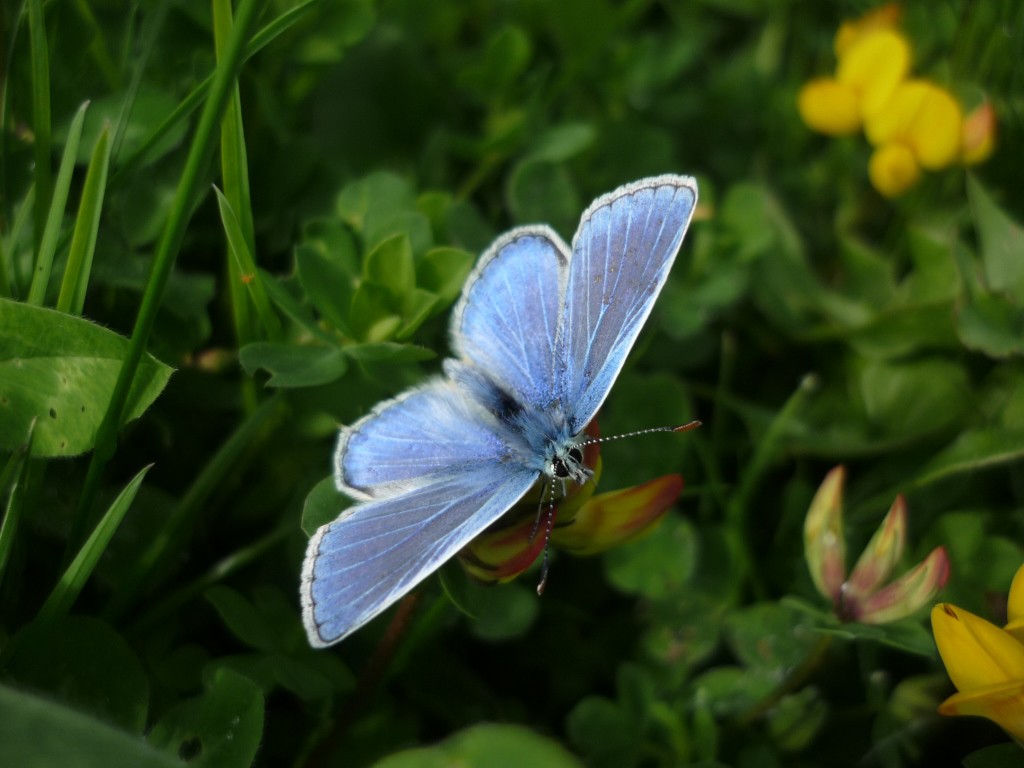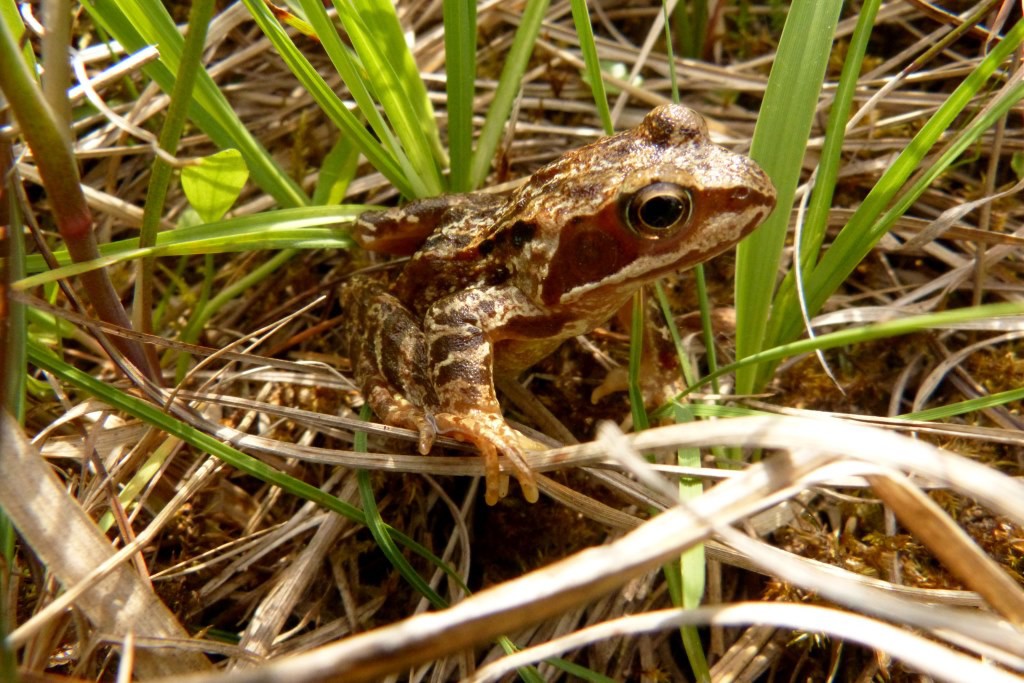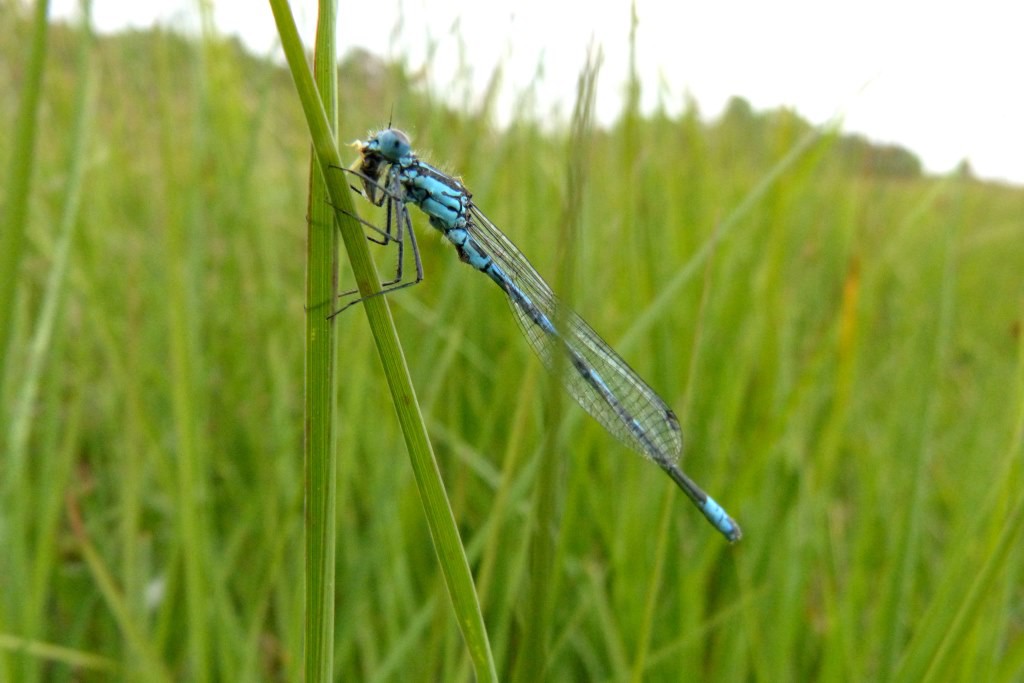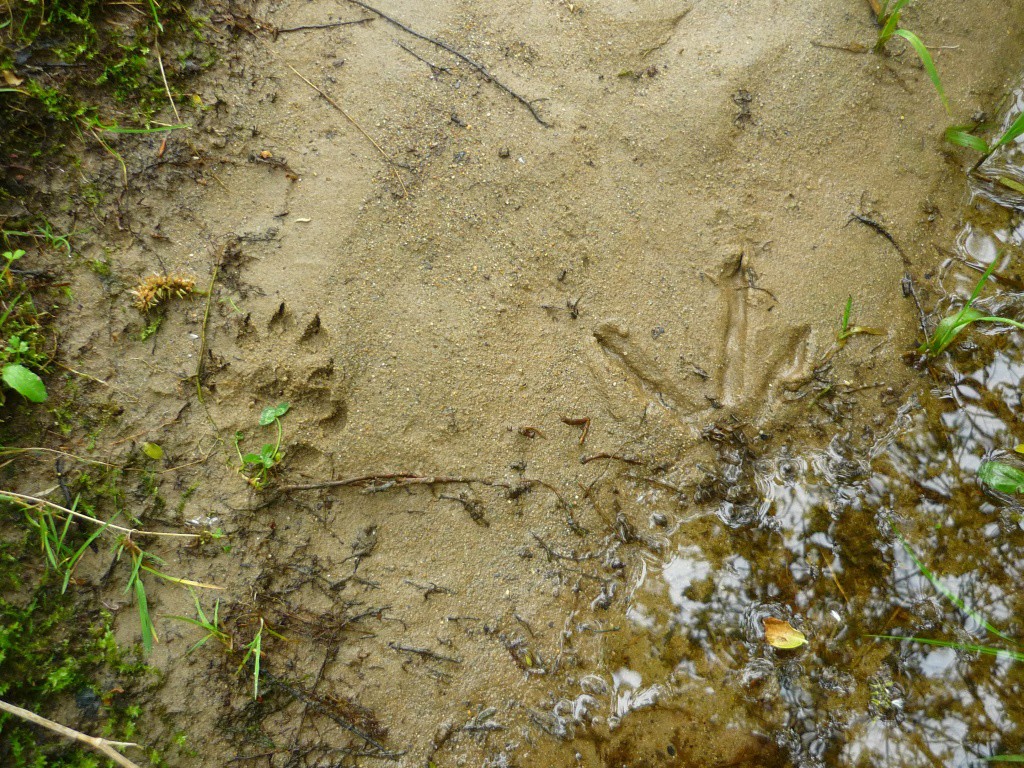By Sean Fagan

A butterfly species that is more typical of dry, calcareous grassland - the small but stunning COMMON BLUE (Polyommatus icarus) can occasionally be found near wetlands, especially on calcareous wetlands such as fens. In photo above is a male, with typically brilliant blue wings (bordered with a thin white fringe) on a fen in west Ireland. Females are more secretive, with brown wings (Photo: Sean Fagan).
.

A true wetland inhabitant, the COMMON FROG (Rana temporaria). Note faint, flat circular area behind eye - this is the ear of the frog (Tympanum membrane). Frogs are an important component of wetland ecosystems - as they are a prey species for a wide variety of predators. Frogs are also voracious predators of invertebrates - a strong frog population in a wetland indicates a thriving invertebrate population - and one of the main indicators of most healthy ecosystems is the diversity and density of invertebrates (Photo: Sean Fagan).
.

One of the many wonderful jewels of Irish wetlands - the COMMON BLUE DAMSELFLY (Enallagma cyathigerum). Can often be seen flitting around, flying weakly, on a fine summers day. The perched damselfly in above photo, perfectly exemplifies the difference between damselflies and dragonflies - damselflies rest with their long wings aligned along their body while dragonflies rest with their wings held horizontal but away (perpendicular) from the body (Photo: Sean Fagan).
.

Two typical wetland inhabitants. Otter tracks on the left and grey heron tracks on the right (Photo: Sean Fagan, Killarney National Park, Southwest Ireland).
.
.
Related articles on this website:
Recent Comments